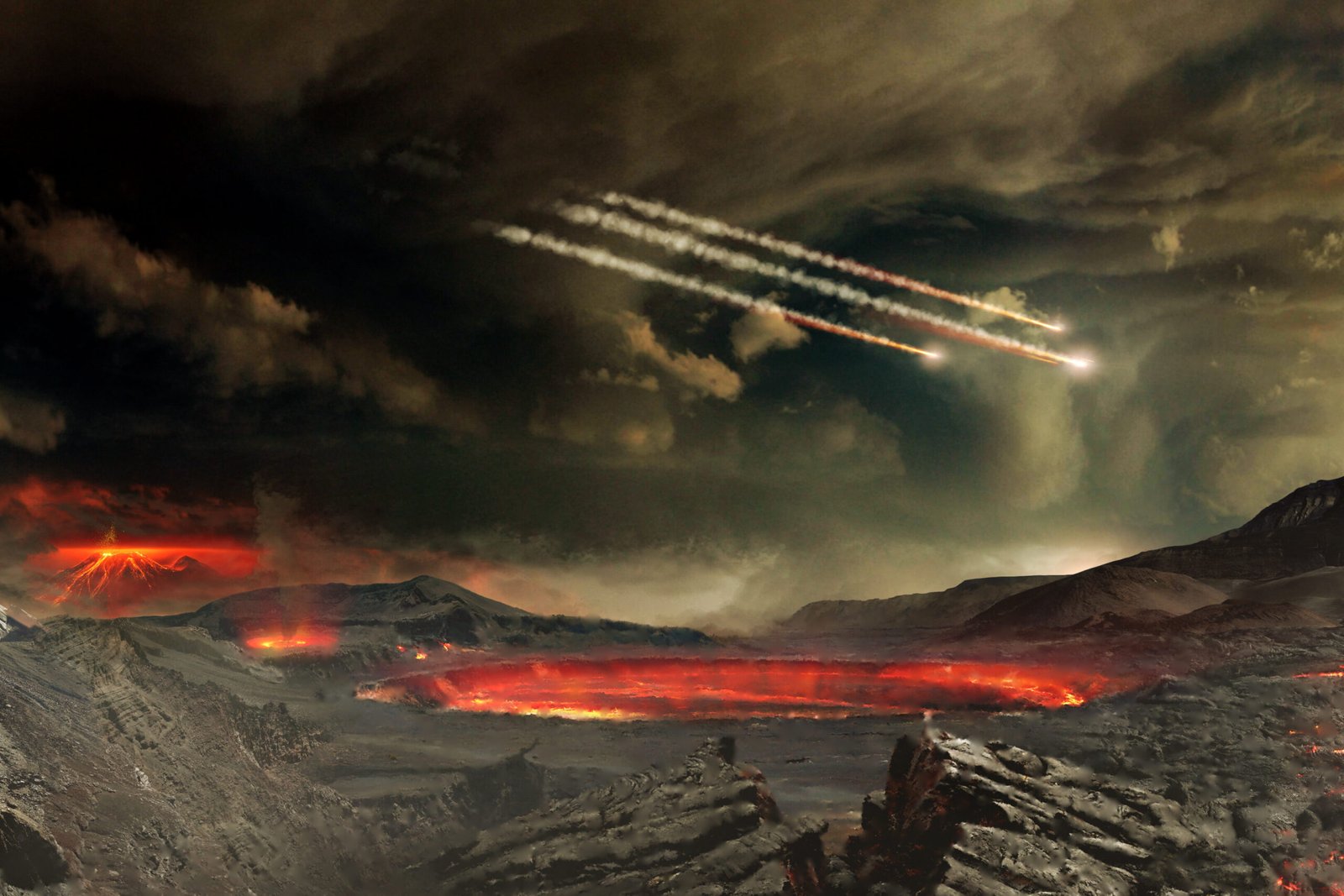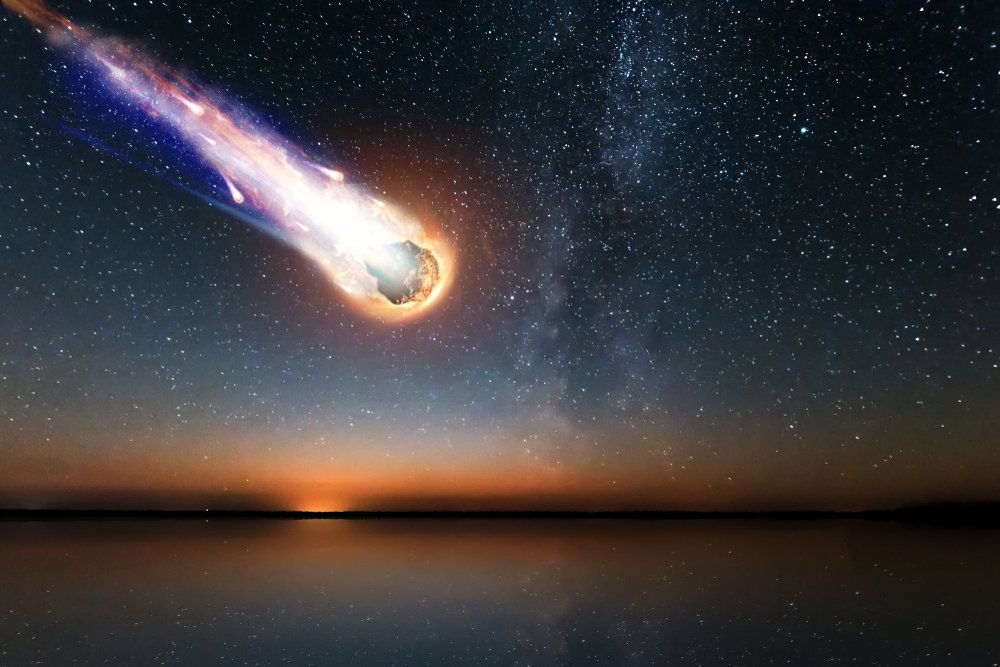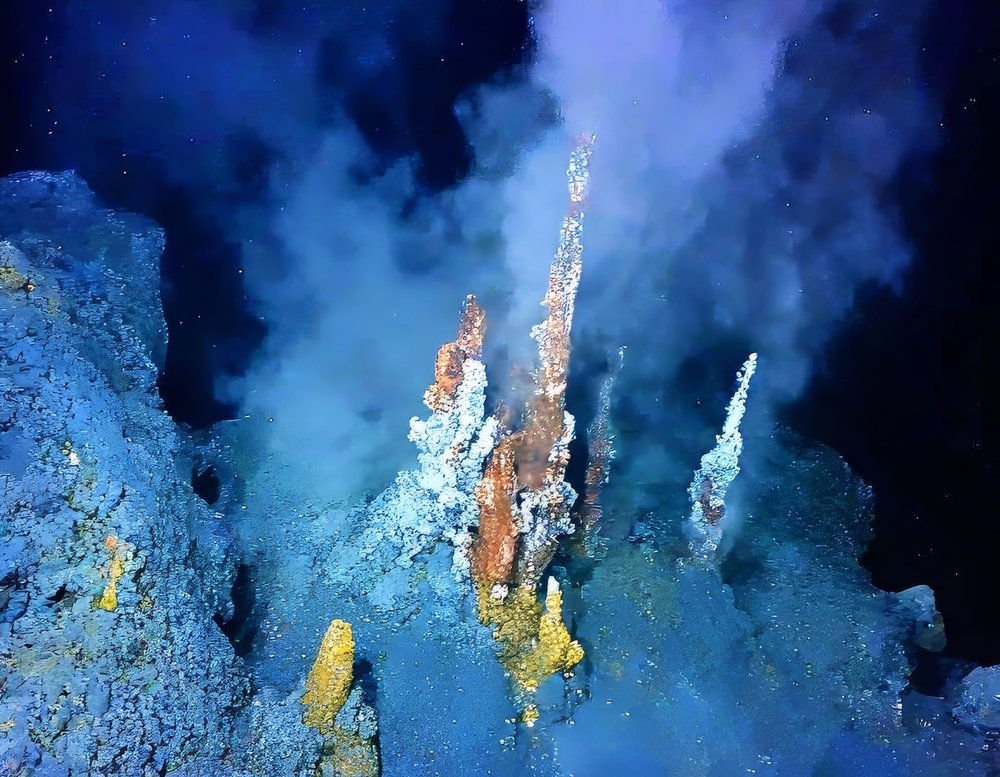It Began with a Planet Full of Chaos and Potential

Picture Earth around 4 billion years ago — a hostile, volcanic world covered in lava fields, violent storms, and no oxygen to breathe. It was nothing like the planet we know today. But this chaotic environment was also full of raw ingredients: water, heat, lightning, and a mix of simple chemicals. Despite the mayhem, something incredible was about to begin.
Experts believe that this early version of Earth provided the perfect conditions for life to start forming. With oceans rich in dissolved minerals, volcanic heat pumping energy into the water, and constant lightning strikes triggering chemical reactions, nature had the tools it needed to start experimenting. These reactions didn’t create complex life overnight — far from it — but they sparked something essential: the building blocks that would eventually lead to cells, organisms, and the vast biodiversity we know today.
Simple Molecules Began to Form Complex Ones
To get to life, you need more than just water and heat. You need molecules that can do something — molecules that can carry instructions, store energy, and make copies of themselves. Scientists studying the origin of life believe this started when simple molecules like methane, ammonia, and hydrogen began to combine into more complex organic compounds.
Through processes powered by lightning, heat from the Earth’s interior, or even ultraviolet radiation from the sun, amino acids and nucleotides may have begun to form. These are the same molecules that make up proteins and DNA today. Lab experiments have shown that in conditions similar to early Earth, these building blocks can emerge surprisingly easily. While they’re not alive, they set the stage for what comes next — systems that can grow, adapt, and eventually pass information along. It’s the first flicker of biology in a world still ruled by chemistry.
Hydrothermal Vents May Have Been the Cradle of Life
One of the most compelling theories about where life began places it deep under the ocean — near hydrothermal vents. These vents are cracks in the seafloor where mineral-rich water gushes out, heated by magma below. Even today, these places are teeming with bizarre life forms that don’t need sunlight to survive.
Researchers believe that these vents offered everything early life would have needed: chemical gradients, protection from harmful radiation, and a rich supply of minerals. Here, molecules could accumulate in tiny rock chambers, protected from harsh surface conditions and surrounded by a constant flow of energy. In these conditions, the first self-replicating molecules may have come together, forming what could be considered primitive life. It’s a theory that makes life feel less like a miracle and more like a product of chemistry given enough time and the right environment.
RNA Might Have Come Before DNA
When we think of life, we often think of DNA — the molecule that stores genetic instructions. But many scientists believe that life may have started with something simpler: RNA. RNA can both store genetic information and help carry out chemical reactions, which makes it a good candidate for the first self-replicating molecule.
This idea, known as the RNA world hypothesis, suggests that early life might have relied on RNA to make copies of itself before DNA and proteins came into the picture. It’s not perfect — RNA is fragile and unstable — but in the right conditions, it could have been just stable enough to kickstart the chain of evolution. The shift from RNA to DNA and proteins would have come later, as life found more efficient ways to survive and replicate. In this sense, the earliest forms of life may have been nothing more than tiny strands of RNA drifting through the ancient oceans, already laying the groundwork for everything that followed.
Life Might Have Started More Than Once
It’s possible that life didn’t just start in one place or in one way. Some researchers believe that multiple forms of proto-life may have emerged around the same time — different chemical systems trying out different survival strategies. Most would have failed. But eventually, one system outperformed the rest, leading to the kind of life that could evolve, adapt, and persist.
This perspective helps explain how complex systems like metabolism and replication might have come together. Instead of a single lucky spark, life’s origin might have been more like a crowded workshop, full of competing experiments. The version of life that succeeded is the one we’re all descended from, but others may have come close before fading out. Thinking about life this way adds depth to its story — it’s not just about beginnings, but about persistence, resilience, and the triumph of one tiny system over all the others.
Meteorites Could Have Delivered the Seeds

Another wild but fascinating idea is that life — or at least its ingredients — may have come from space. Some meteorites have been found to contain amino acids and other organic molecules. That’s led to the theory of panspermia, which suggests that the building blocks of life, or even primitive microbes, could have hitched a ride on space rocks and landed on early Earth.
This doesn’t mean aliens dropped off life as we know it, but it suggests that Earth might have received help from beyond. If organic molecules formed on asteroids or comets, and those rocks crashed into our planet during its violent early years, they could have jump-started the process of life. It’s still speculative, but the fact that space rocks carry complex chemistry makes it harder to dismiss. Life’s story might not have started entirely on Earth — and that possibility makes the universe feel a little more connected, and a lot more mysterious.
Membranes Were the First Step Toward Cells
Life as we know it wouldn’t be possible without cells. But before we had complex cells with organelles and nuclei, life needed something much simpler: membranes. These are thin barriers that separate the inside of a cell from the outside world. Without a membrane, molecules would just float around aimlessly. With one, they could be protected, concentrated, and begin to interact in more organized ways.
Scientists believe early life may have started with tiny bubbles called protocells. These formed when fatty molecules spontaneously created spheres in water, similar to how oil forms droplets. Inside those bubbles, the first simple chemical reactions could occur — making it possible for molecules like RNA to replicate and evolve. These protocells didn’t think or grow like modern cells, but they marked a key transition from chemistry to biology. Once life had compartments, it had the potential to become more than just a mix of molecules. It had structure, identity, and a boundary — the start of a self.
Lightning May Have Sparked the First Building Blocks
Sometimes, nature just needs a jolt to get things moving. That’s why lightning is considered a major player in theories about life’s origins. In the famous Miller-Urey experiment in the 1950s, scientists simulated early Earth conditions — a mix of water, gases, and electricity — and found that organic molecules like amino acids could form after just a few days.
This experiment gave powerful evidence that Earth’s violent early storms weren’t just destructive. They were creative, too. Lightning, acting like a natural spark plug, helped drive the chemical reactions needed to build life’s first ingredients. While the full recipe for life is far more complex, the idea that something as simple as a lightning bolt could kick off the process is both humbling and awe-inspiring. It reminds us that the conditions that feel wild and chaotic might also be the ones where something brand new is waiting to emerge.
Life Took Time, Lots of It
It’s easy to picture life popping into existence with a single miracle moment. But the reality is slower, messier, and more drawn out. The process from lifeless molecules to living cells likely took hundreds of millions of years. There were false starts, dead ends, and chemical systems that almost made it before fizzling out.
Geologists and biologists point to microfossils and carbon signatures dating back more than 3.5 billion years, which suggests that by then, life had already been evolving for quite a while. Earth itself is about 4.5 billion years old, so the window for life to emerge was long — and full of trial and error. This long timeline tells us that while life might be inevitable under the right conditions, it’s not immediate. It takes time for nature to work out the details — and a whole lot of patience before that first cell gets it right.
The First Life Was Nothing Like Us
When we ask how life started, it’s easy to imagine something vaguely familiar — a tiny animal, a single-cell creature with DNA and a purpose. But the truth is, early life on Earth probably didn’t look like anything alive today. It might not have had DNA, or even clear boundaries between living and non-living.
Scientists think the first life forms were likely simple molecules capable of making imperfect copies of themselves. These replicators were fragile, error-prone, and constantly being broken apart by their surroundings. But some of them lasted long enough to make more copies. And in doing so, they set off the evolutionary process that would one day lead to microbes, plants, animals, and eventually us. These earliest life forms were not organisms in the way we think of them now. They were just the beginning of a long, winding path toward complexity — and proof that life doesn’t need to start big to become extraordinary.
Life Changed the Planet and the Planet Changed Life
Once the first life took hold, it didn’t just adapt to Earth — it began transforming it. Ancient microbes known as cyanobacteria started releasing oxygen as a byproduct of photosynthesis. At first, that oxygen was poisonous to most other life forms. But over time, it filled the atmosphere and paved the way for more complex organisms to evolve.
This feedback loop between life and Earth has never stopped. Life changes the environment, and the environment shapes what life can become. The rise of oxygen led to new energy systems, which allowed cells to grow larger and work together. Eventually, this led to plants, animals, and ecosystems. In a way, the first life was the planet’s greatest architect — slowly designing the conditions that would one day allow it to flourish. It all started with a few molecules and a few lucky breaks, but once life arrived, it began rewriting the world.
The Origin of Life Is Still One of Science’s Biggest Mysteries

Even with all we’ve learned, scientists still don’t have a complete answer to how life started on Earth. Dozens of theories exist from deep-sea vents to clay crystals to interstellar chemistry — but the exact path remains elusive. What we do know is that the origin of life wasn’t a single event, but a process, with many steps and many possibilities.
This mystery is what makes the story so captivating. Every year, researchers discover new clues, run new experiments, and get a little closer to understanding how non-living chemistry turned into something that could evolve. And while we may not have all the answers yet, just asking the question brings us closer to understanding what it really means to be alive. Life’s beginnings may be buried in the distant past, but the curiosity it inspires is timeless and the search continues.
